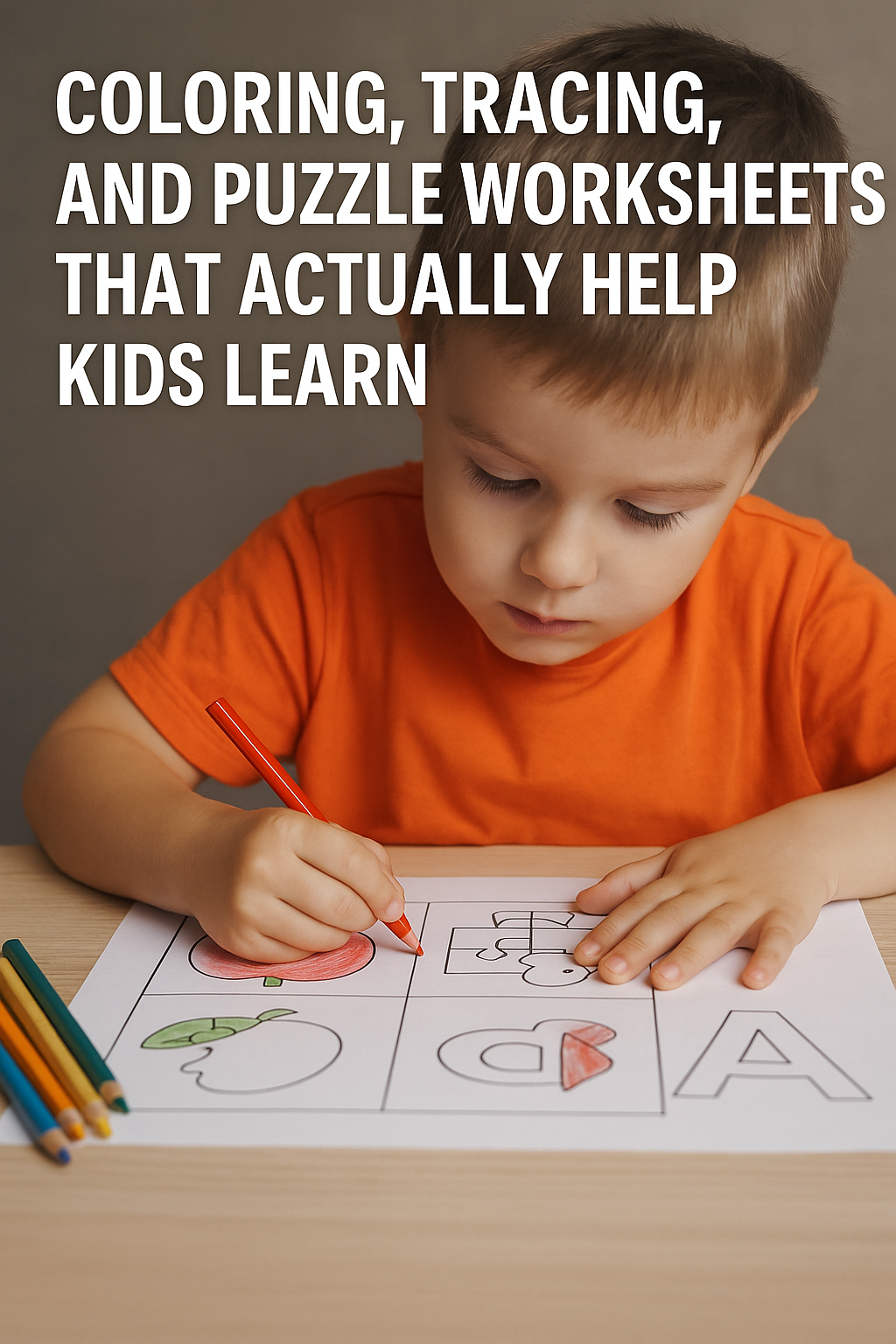In today’s digital-heavy world, there’s something incredibly powerful about putting pencil to paper. Simple activities like coloring, tracing, and solving puzzles aren’t just fun—they’re fundamental for a child’s early brain development.
Whether your child is in nursery, LKG, UKG, or Grade 1–2, these printable worksheets can do more than keep them busy—they can ignite learning, strengthen memory, and sharpen motor skills.
Let’s dive into why these classic worksheet types work—and how to use them effectively.
1. Why Coloring Worksheets Are More Than Just Fun
Coloring might look like a passive activity, but it’s packed with learning benefits:
-
Develops fine motor skills: Holding crayons strengthens tiny hand muscles.
-
Enhances focus and patience: Staying within lines builds attention span.
-
Boosts color recognition and creativity: Children learn to associate objects with real-world colors.
Bonus Tip: Use coloring worksheets that match academic themes—like “Color the fruits,” “Parts of the body,” or “Festivals of India”—to link fun with learning.
👉 Explore Our Toddler & Nursery Coloring Worksheets
2. Tracing Worksheets: The First Step Toward Writing
Tracing lines, shapes, letters, and numbers is the foundation of good handwriting.
Tracing Worksheets Help Kids:
-
Develop hand-eye coordination
-
Recognize letter and number shapes
-
Improve pencil grip and writing fluency
Start with straight lines and curves, then move on to letter and number tracing.
Pro Tip: Laminate your tracing sheets or use transparent folders and a dry-erase marker to reuse the worksheets multiple times.
👉 Browse Our Tracing Worksheet Collection for LKG & UKG
3. Puzzle Worksheets: Learning Through Problem-Solving
Puzzles aren’t just entertaining—they train the brain.
Puzzle Worksheets Improve:
-
Critical thinking & logic
-
Visual memory
-
Sequencing and pattern recognition
Some of the best puzzle worksheet types for kids include:
-
Matching (shadow/object or letter/image)
-
Mazes
-
Spot the difference
-
Sequencing patterns
-
Sorting by size, shape, or color
4. Combine All Three: The Ultimate Learning Experience
The most effective worksheets often blend activities:
| Worksheet Type | Skills Developed |
|---|---|
| Color & Trace Letters | Motor control + literacy |
| Puzzle + Matching Shapes | Cognitive reasoning + visual learning |
| Maze with Coloring Path | Spatial awareness + creativity |
Mixing coloring, tracing, and puzzles in one worksheet keeps kids engaged longer—and supports multiple areas of development at once.
5. How to Use These Worksheets at Home or in Class
To maximize results, follow these strategies:
-
Keep sessions short (15–20 minutes max)
-
Mix skill levels to avoid boredom or frustration
-
Create a printable worksheet folder by subject and age
-
Praise effort over perfection to build confidence
💡 Teacher tip: Use printable puzzles as end-of-week review tools or quick assessments in small groups.
6. Why AK SmartShala Worksheets Stand Out
At AKSmartShalaWorksheets.com, we go beyond basic templates:
- Curriculum-aligned for Indian syllabi (CBSE, ICSE, and State Boards)
- Professionally designed with vibrant visuals
- Categorized by age: Toddlers, LKG, UKG, Grade 1, Grade 2 & Higher
- Free sample worksheets available for download
- Affordable lifetime access plans for parents and schools
Conclusion
From coloring in apples to tracing “A for Apple” to solving a fun “Match the Shape” puzzle, these worksheets do more than entertain—they build lifelong skills.
If you’re a parent, teacher, or homeschooling guide looking for tools that truly help kids learn, start with the classics: Coloring, Tracing, and Puzzle Worksheets.
Source: AK Children Play School

